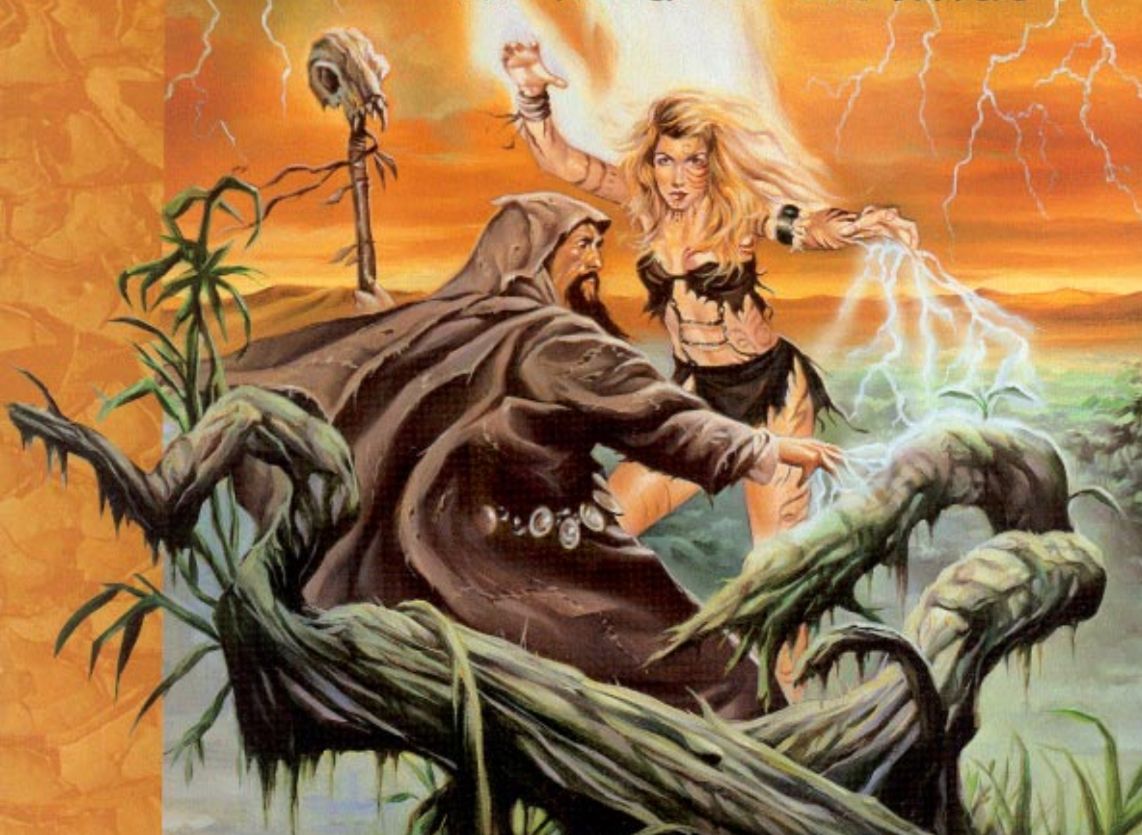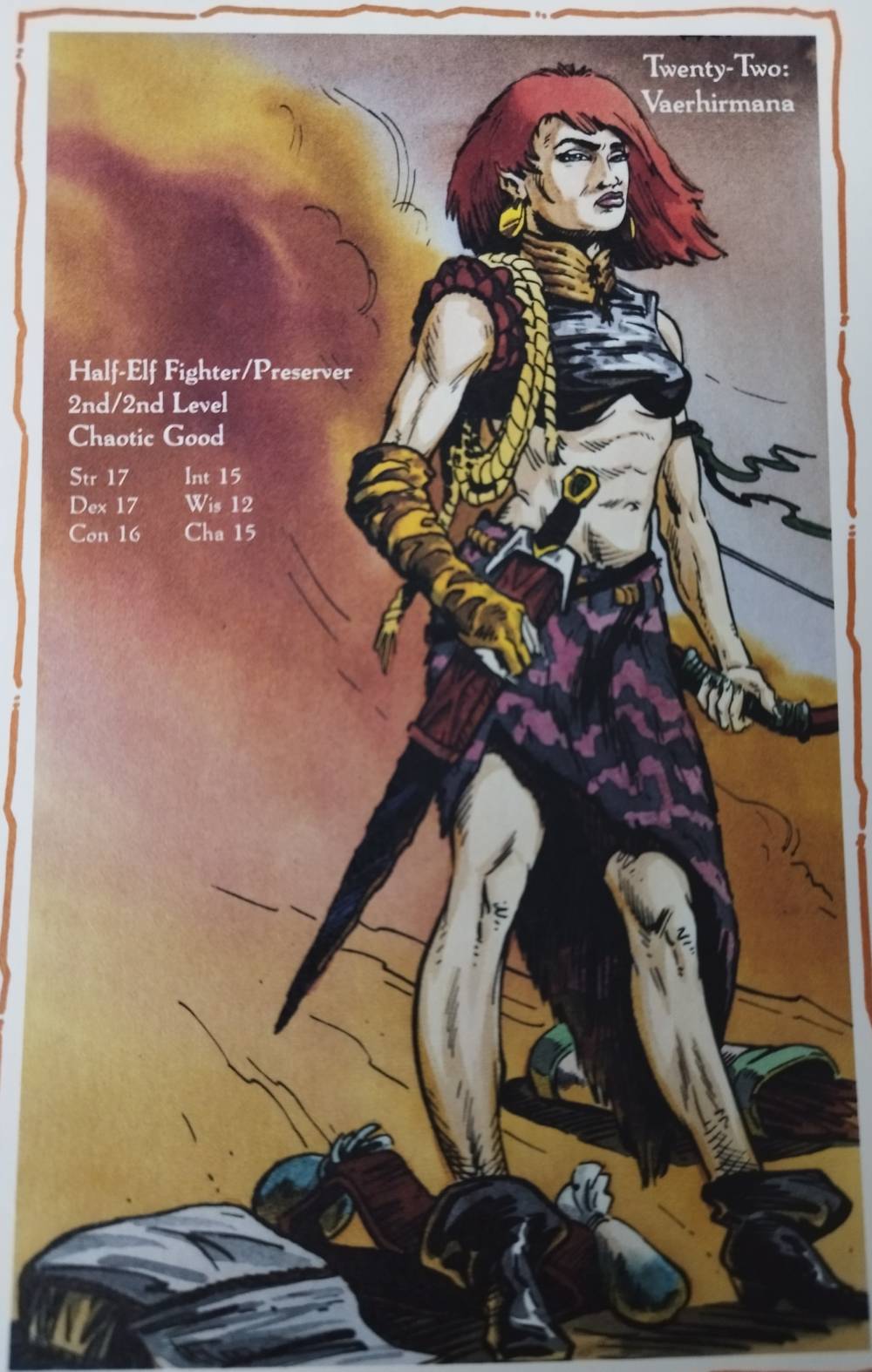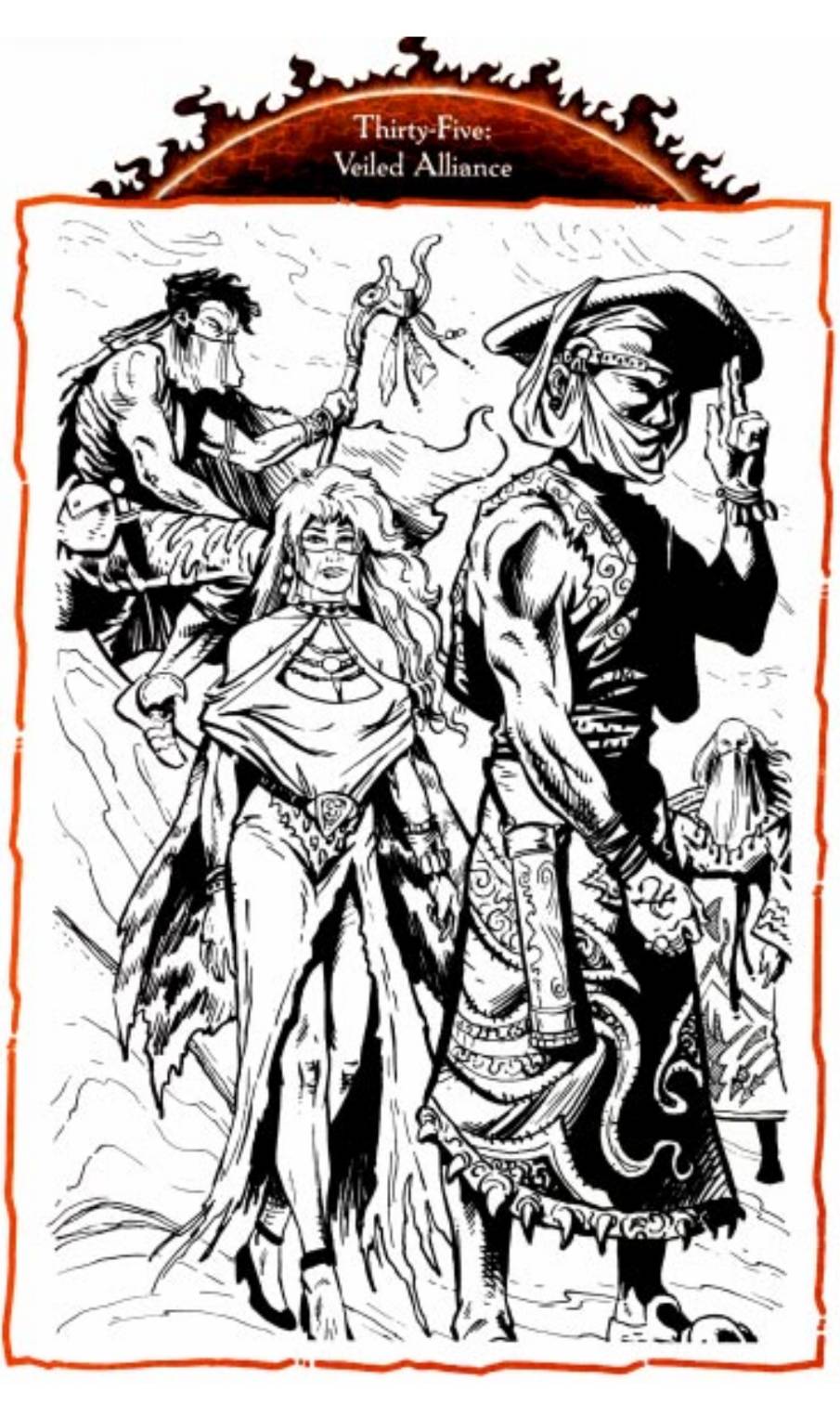Will Dark Sun Return to Dungeons & Dragons in 5th Edition?
No one knows for sure, but it seems likely, judging from recent Unearthed Arcana playtesting material. UA2025: Apocalyptic Subclasses was released at the end of August and introduces four new subclasses for the Druid (Circle of Preservation), Fighter (Gladiator), Sorcerer (Defiled Sorcery), and Warlock (Sorcerer-King Patron).
If anyone still doubted the connection, the reference to Dark Sun is direct. These are unmistakably Dark Sun archetypes, even if the Gladiator could appear in any other setting. The others fit perfectly in Athas. Today I want to talk about one of them, the Circle of Preservation, and compare it to its origins in AD&D 2nd Edition.
The Original Preservers in AD&D 2nd Edition
The Circle of Preservation represents a type of druid who uses magic to conserve natural resources and restore what greed and exploitation have destroyed. To understand why this subclass matters, we need to revisit some of the lore behind Dark Sun.
Originally, Preservers in Dark Sun were a type of wizard, not druids. In this world, every wizard must decide whether to use magic responsibly or destructively. Those who ravage the land are called Defilers. Their spells are stronger and easier to cast, but every use drains life from the world. Defilers are powerful, but they are also destroyers, and most of them are evil.
Preservers are the opposite. Their magic protects the land, but it is weaker, and they are persecuted by the Sorcerer-Kings, who consider their practice a crime punishable by death. Ordinary people do not love them either. To many, magic itself is the reason the world became a wasteland, so Preservers are feared and hated alike. They must live in secret, never revealing their powers, because betrayal could mean slavery or execution.
Mechanically, Preservers were normal wizards who simply chose to cast their spells without defiling the terrain. Defilers used the same spell lists but gained experience levels faster than normal wizards, in exchange for destroying nearby nature. A player could also choose to be a Defiler, though this was difficult, since Defilers outside the Sorcerer-Kings’ service were hunted by everyone. Unlike Preservers, they had no hidden communities and lived in isolation.
In this new playtest material, two subclasses resemble Defilers: the Defiled Sorcery sorcerer and the Sorcerer-King Patron warlock. The warlock could also reflect the Templar, a type of priest who serves the Sorcerer-Kings. I will discuss those in future posts.
By contrast, druids in AD&D 2nd Edition were priests devoted to the spirits of the earth. Unlike the organized circles of the Player’s Handbook, Athasian druids were solitary guardians tied to specific oases, mountains, or stretches of desert.
In the 5th Edition playtest, the Preservers have become druids of the Circle of Preservation.
Circle of Preservation Druid
Safeguard Nature and Heal the World
The document describes this subclass as follows:
Druids of the Circle of Preservation work tirelessly to conserve natural resources and restore places once ruined by greed and exploitation. Through a combination of conservation and restorative magic, Druids of this order shield and spread life across the land. The most powerful members of this order can return vitality to sweeping fields, transforming wastelands into thriving wildernesses once more.
Let’s review the features one by one.
Circle of Preservation Spells
- Level 3: Bless, Lesser Restoration, Protection from Poison, Sanctuary
- Level 5: Beacon of Hope, Plant Growth
- Level 7: Aura of Life, Death Ward
- Level 9: Greater Restoration, Hallow
This is a solid list of spells. Some players have commented that many are situational, but even situational spells are worth having when your subclass gives them for free. In a setting like Dark Sun, Lesser Restoration and Greater Restoration could be especially useful because poison and exhaustion are both common dangers in the desert.
Level 3: Preserved Land
As a Bonus Action, you can expend a use of your Wild Shape to fill a 15-foot Cube originating from a point on the ground you can see within 120 feet of yourself with revitalizing energy. The effect lasts for 1 minute or until you have the Incapacitated condition, are more than 120 feet away from the Cube, or die.
Whenever a creature (including you) ends its turn in the Cube, you can grant the creature one of the following benefits:
- Bolster. The creature gains Temporary Hit Points equal to 1d4 plus your Druid level.
- Purify. You end one effect on the creature causing it to have the Frightened or Poisoned condition.
In addition, nonmagical vegetation native to the region sprouts on the ground within the Cube. This vegetation disappears when the effect ends.
As a Bonus Action on subsequent turns, you can move the Cube up to 30 feet to another area on the ground within 120 feet of yourself.
Many druid subclass features in the 2024 rules spend Wild Shape uses as charges, similar to how clerics spend Channel Divinity. This feature closely resembles the Twilight Domain cleric’s Twilight Sanctuary, which also provides temporary hit points and condition removal. Twilight Sanctuary covers a larger area but requires an action and always centers on the cleric. Preserved Land uses only a bonus action, can be placed up to 120 feet away, and can be moved later. The temporary hit points are slightly lower, but the flexibility is impressive. The ability to remove poison fits a Dark Sun environment where poison is common.
In my opinion, this ability is excellent. Having played the Twilight Domain cleric in two campaigns, I know how much those temporary hit points reduce damage every round. I would not be surprised if this druid ends up being as strong as one of the best cleric subclasses.
Level 3: Student of Preservation
Your studies have improved your understanding of the order and resilience of nature, granting you the following benefits.
Frugal Casting. When you cast a Druid spell, you can cast it without Material components, except Material components that are consumed by the spell or that have a cost specified in the spell.
Additionally, whenever you cast a Druid spell that requires a Material component that is consumed by the spell, there is a 10 percent chance that the component isn’t consumed as part of that casting.
Tool Proficiency. You gain proficiency with one type of Artisan’s Tools of your choice.
The first part effectively removes the need for a spellcasting focus, which is fitting for a world where preserver magic is outlawed. It allows a Preserver to cast spells even if stripped of belongings, as happens at the start of the first adventure for the original Dark Sun Freedom. The 10 percent chance to avoid consuming a material component is unusual. Modern D&D rarely uses percentage rolls for this kind of benefit, but it is still an interesting twist.
Level 6: Improved Preservation
Your Preserved Land becomes more powerful in the following ways.
Fortify Protectors. While inside the Cube created by your Preserved Land, you and your allies gain a bonus to Constitution saving throws equal to your Wisdom modifier (minimum of +1).
Reject Desecrators. Whenever the Cube created by your Preserved Land enters an enemy’s space and whenever an enemy enters the Cube or ends its turn there, that enemy makes a Wisdom saving throw against your spell save DC. On a failed save, the enemy takes 2d10 Radiant damage, and its Speed is halved until the end of its next turn as new growth rises to hinder it. On a successful save, the enemy takes half as much damage only. An enemy makes this save only once per turn.
This feature makes your Preserved Land even stronger. Between Lesser Restoration, Protection from Poison, and these bonuses to Constitution saves, your party becomes nearly immune to poison.
The second part, Reject Desecrators, starts to make this ability too good. Each round it deals 2d10 radiant damage to any opponent in contact with this area, which can also move, and it does not stop when it hits an opponent as some spells do. Because it is an area effect, it can deal a large amount of damage every round and then return to protecting you and your allies.
Level 10: Facilitated Restoration
You can cast Lesser Restoration or Greater Restoration without expending a spell slot or requiring spell components. You can use this feature to cast a spell in this way a number of times equal to your Wisdom modifier (minimum of once), and you regain all expended uses when you finish a Long Rest.
More protection against the same effects. This might mean those conditions will be frequent in the campaign setting, or it might simply overlap too much with previous features and need revision later.
Level 14: Sacrosanct Land
The size of the Cube created by your Preserved Land increases to a 30-foot Cube.
In addition, when a creature you can see in the area of your Preserved Land is hit by an attack roll, you can take a Reaction to halve that attack’s damage against the creature.
At this level, subclass features are often dramatic, and this one delivers. The larger area lets you cover more allies and enemies at once, turning the battlefield into your territory. The reaction to reduce damage adds another layer of protection, especially since you can choose the moment after seeing the attack roll but before damage is rolled.
If this subclass is published as written, I expect it to be among the strongest druid options in 5e, possibly one of the strongest subclasses overall. I would like to see it in play, since I did not have time to test it when the UA was released, and now I am even more curious about the other subclasses in this document.
Ok, we do not always love the UA, but this one might deserve it.



